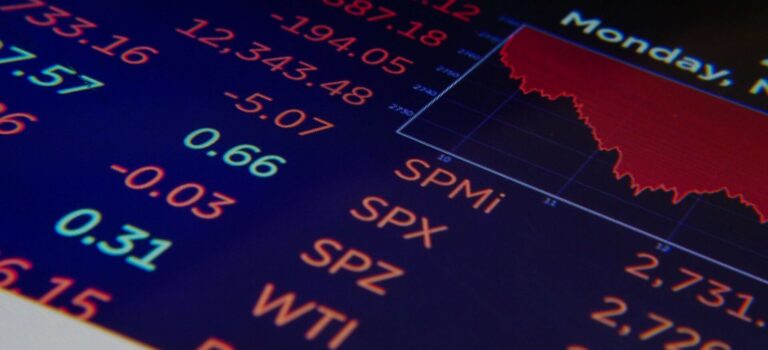The Investor Guide to Vanguard Funds for December is AVAILABLE NOW! Links to the December data files are posted below. Market Perspective: Value Stocks Rally as Economy Recovers The stock market […]


The Investor Guide to Vanguard Funds for December is AVAILABLE NOW! Links to the December data files are posted below. Market Perspective: Value Stocks Rally as Economy Recovers The stock market […]
The stock market had a mixed opening to the week, with the Nasdaq posting a gain of 0.50 percent. The Dow lost 0.62 percent, while the S&P 500 declined 0.44 percent. The Russell 2000 advanced with a gain of 0.11 percent.
Projected increases in demand on the horizon for energy use and travel helped to drive up WTI crude oil prices by $0.42 to $46.99 per barrel and wholesale gasoline prices by $0.01 to $1.32 per gallon on the day. Even so, OPEC announced that it would cut its forecast for oil demand for next year down to 5.9 million barrels a day, which is 350,000 barrels less for daily demand than previously expected. As a result, Chevron (CVX) and Exxon Mobil (XOM) shares took a 3.3 percent and 3.6 hit, respectively.
Monday’s major gain-makers for the S&P 500 were Amazon.com (AMZN), Microsoft (MSFT), and Netflix (NFLX), with gains of 1.3 percent, 0.4 percent, and 3.8 percent, respectively. SPDR Technology (XLK) advanced 0.37 percent.
SPDR Consumer Discretionary (XLY) gained 0.19 percent. Tesla will be joining the consumer discretionary sector when it enters the S&P 500 Index on Friday. Amazon currently makes up more than 40 percent of the sector, but that will drop to around 35 percent when Tesla enters with a weighting close to 15 percent. XLY caps single-stock exposure, but this fund and others tracking the S&P 500 consumer discretionary sector will be top-heavy with Amazon and Tesla accounting for more than one-third of assets.
Although it represents a much smaller market capitalization within the S&P 500, Alexion Pharmaceuticals (ALXN) was still a notable winner for Monday, with an increase of 29.0 percent for the day. AstraZeneca (AZN) solidified its agreement to purchase Alexion for $39 billion, but closed with a loss of 7.8 percent.
Monday was marked by a major development on the coronavirus vaccine front. Notably, Pfizer (PFE) and BioNTech’s (BNTX) vaccine, which received emergency authorization use approval from the FDA recently, had its first round of public distribution. This initial distribution kicks off Pfizer’s contract with the U.S. government to make at least 100 million vaccine doses available to the American public by March of next year. In addition, Moderna’s (MRNA) vaccine candidate could potentially receive approval by the FDA through its emergency use authorization in the coming days or weeks.
iShares MSCI Emerging Markets (EEM) dipped 0.52 percent. Four Chinese companies were delisted from the U.S. market after not complying with audit rules. The developed market iShares MSCI EAFE (EFA) gained 0.06 percent after the European Union and United Kingdom once again extended the deadline for Brexit negotiations.
The other major situation driving market dynamics for the start of the week was the optimism boost over the status of the proposed $900 billion coronavirus relief package bill, which currently has bipartisan support.
For the coming week, the U.S. Federal Reserve has its next meeting on Wednesday. For economic data, we await the release of the November Import Price Index for Tuesday, which is projected to reflect a 0.3 percent increase in import prices over the last month. The November industrial production and capacity utilization report, which is published by the Fed is expected to show notable increases over the previous month.
Housing data is out this week. First will be the National Association of Homebuilders’ sentiment index for December. The index was at an all-time high in November. Housing starts and building permits for November will arrive on Thursday.
Click Here to view today’s Global Momentum Guide WEEKLY SECTOR MOVERS The Russell 2000 Index gained 1.02 percent last week. The MSCI EAFE declined 0.52 percent, the Dow Jones […]
Last week concluded on a mixed note. The S&P 500 fell 0.13 percent on Friday, the Dow rose slightly for a gain of 0.16 percent, and the Nasdaq lost 0.23 percent for the day. The Russell 2000 Index dropped 0.56 percent.
Small-cap and value sectors extended their recent market leadership, but a lack of further economic stimulus weighed on shares. On the week, the performance of the major indexes was slightly down, except for the Russell 2000 Index, which gained 1.02 percent. The other indexes had losses of less than 1 percent, with the Dow down 0.57 percent, the Nasdaq 0.69 percent and the S&P 500 sliding 0.96 percent.
It’s also likely investors started selling to make room for Tesla (TSLA) in the S&P 500 Index. The stock will be the 5th largest company in the index when it joins next week. Index funds will position their portfolios ahead of the December 18 entry.
The lone winning S&P 500 sector for the week was energy. SPDR Energy (XLE) advanced 1.14 percent. SPDR S&P Oil & Gas Equipment & Services (XES) advanced 3.50 percent. First Trust ISE Revere Natural Gas (FCG) added 3.44 percent, and West Texas Intermediate crude drifted higher to close the week. Natural gas rebounded after plunging 20 percent. It closed Friday at $2.59 per mmBTU.
Initial claims for unemployment hit 853,000 last week, up from 716,000 a week prior as some states intensified lockdown policies. Continuing claims in state programs also ticked up after having fallen almost every week since peaking in the spring. Despite the uptick in first-time and continuing state unemployment claims over the week, the economy had 6.7 million job openings in October according to the latest report from the Department of Labor. That was up 200,000 from September.
Data on consumer and producer inflation released for November reflected a fairly muted trend. Consumer prices increased 0.2 percent, and core inflation climbed 0.2 percent as well for the month. The consensus forecast was expecting 0.1 percent. Producer prices grew 0.1 percent, in line with forecasts and down from 0.3 percent in October.
Even though renewed lockdown policies may have triggered an increase in unemployment claims, consumer sentiment reflects that consumers have largely refrained from fretting over the economic consequences of additional lockdown periods. As of the end of the week, the University of Michigan’s early read of consumer sentiment holds. The advance reading hit 81.4, well above forecasts of 75.5 and the 76.9 reading in November.
The 10-year Treasury yield held below 1 percent last week, closing on Friday at 0.89 percent. In turn, government bonds benefited from lower rates. iShares 20+ Year Treasury (TLT) climbed 2.31 percent on the week. Other bond funds posted relatively smaller moves. iShares iBoxx Investment Grade Corporate Bond (LQD0 rose 0.17 percent, while iShares iBoxx High Yield Corporate Bond (HYG) fell 0.21 percent.
The U.S. Dollar Index gained 0.22 percent this week. Bearish traders increased their bets against the greenback, making for the largest short position in history. Foreign shares slid against a stronger U.S. dollar and Brexit tensions. The United Kingdom says it will finally exit the European Union without a trade deal if no agreement is reached by December 31. This contributed to the sinking of the British pound of 1.56 percent on the week. Similarly, iShares MSCI Emerging Markets (EEM) declined 0.31 percent and iShares MSCI EAFE 0.44 percent.
Positive developments on the vaccine front, with recent announcements by the FDA of emergency authorization approval votes underway for the vaccine developed by Pfizer (PFE) and BioNTech (BNTX). With more details available for the public on the expected timeline for availability of a vaccine, the expectation is that consumer sentiment and the overall progress of the economic recovery will remain on course.

The Investor Guide to Fidelity Funds for December 2020 is AVAILABLE NOW! December Data Files Are Posted Below Market Perspective: Value Stocks Rally as Investor Optimism Increases Equities surged […]